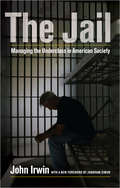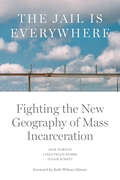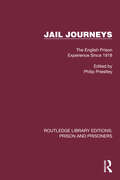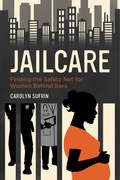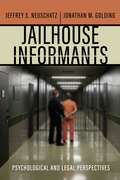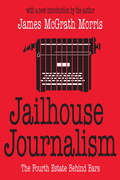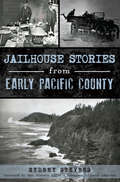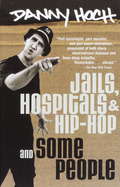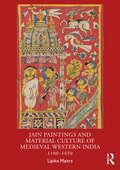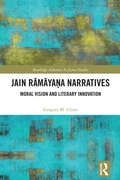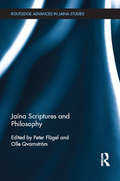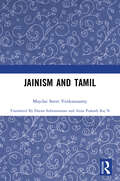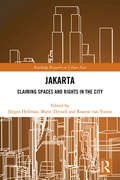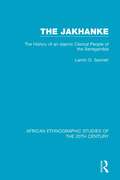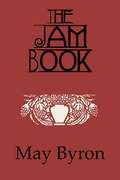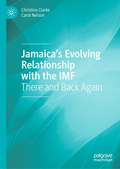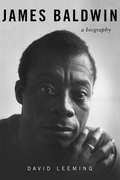- Table View
- List View
The Jail
by John IrwinThe path away from America's prison crisis may lead through the jail. While there may be many positive aspects of jails as sites of confinement, especially when compared with the prisons of mass incarceration, Irwin's analysis pointed to features that could make the new jail-based version of mass incarceration even worse. The local nature and relative obscurity of jails means that the level of legal review and due process obtainable in prisons through the persistent efforts of civil rights lawyers may be even harder to maintain in jails. The historic focus of jails on what Irwin called "rabble management" threatens to undermine the opportunity presented by the present prison crisis to rethink America's overreliance on confinement of all kinds (whether prisons, jails, or immigration detention centers). If so, it is vital that those of us committed to reversing the destructive effects of mass incarceration on American democracy and social equality expand our concern and our research from prisons to the jails that may replace them. The re-publication of John Irwin's The Jail: Managing the Underclass in American Society is a most timely aid to that mission. -From the foreword by Jonathan Simon
The Jail is Everywhere: Fighting the New Geography of Mass Incarceration
by Jack Norton Lydia Pelot-Hobbs Judah ScheptA VITAL COLLECTION FROM A KEY BATTLEGROUND IN THE ABOLITION STRUGGLE: THE COUNTY JAILNearly every county and major city in the United States has a jail, the short-term detention center controlled by local sheriffs that funnels people into prisons and long-term incarceration. While the growing movement against incarceration and policing has called to reform or abolish prisons, jails have often gone unnoticed, or in some cases seen as a "better" alternative to prisons."Yet jails, in recent decades, have been the fastest-growing sector of the US carceral state. Jails are widely used for immigrant detention by ICE and the U.S. Marshals and as a place to offload people that prisons can't hold. As jails grow, they transform the region around them, and whole towns and small cities see health care, mental health care, substance abuse, and employment opportunities taken over by carceral concerns.If jails are everywhere, resistance to jails is too. The recent jail boom has sparked a wealth of local activist struggles to resist and close jails all across the United States, from rural counties to major cities. The Jail Is Everywhere brings these disparate voices together, with contributions from activists, scholars, and expert journalists describing the effects of this quiet jail boom, mapping the growth of the carceral state, and sharing strategies from recent fights against jail construction to strengthen struggles against jailing everywhere.With a foreword by Ruth Wilson Gilmore.
Jail Journeys: The English Prison Experience Since 1918 (Routledge Library Editions: Prison and Prisoners)
by Philip PriestleyOriginally published in 1989, Jail Journeys was a contemporary history of the English prison system in the words of those who had endured it as prisoners or who had worked within it. More than 1000 extracts from more than 150 first-hand accounts of life ‘inside’ chronicle the empty routines of the prison day and tell of the loneliness, the despair, the squalor, the fights, the friendships, the sex, the humour. There are also eye-witness accounts of the Dartmoor Mutiny, of hangings and floggings, of escapes, and personal statements by the well-known – James Phelan, Wilfred Macartney, Albert Pierrepoint, Charles Kray, John McVicar, Jimmy Boyle, Alfie Hinds, Lord Alfred Douglas – and by many others less well known. These testimonies, by turn dramatic, literate and naïve, add up to an implicit sociology of the twentieth-century English prison, depicting a divided social structure with ‘screws’ on one side and ‘cons’ on the other. The book is aimed at anyone with an interest in social issues and twentieth-century history as well as students of law, history, sociology, criminology, and social administration, and at professionals working in all these fields.
Jailbirds: Lessons from a Women's Prison
by Mim Skinner'I've never read a book like Jailbirds before - which shows quite how much we need it. It is very funny and very important and reminds us that women in jail are still women worth listening to. I'm only grateful - for them, and for us -that Mim was listening.' PANDORA SYKES'Mim's warmth and understanding make for a humane, sometimes humorous, and always perceptive account of prison life. This book is a fine achievement.' KEN LOACHDarkly funny, heartbreakingly poignant and stark in its revelations about the UK's attitude towards people on the fringes of society and women in general, JAILBIRDS is this year's book you need to read.***"Did you know . . . . . . that 48 per cent of the women in prison have committed an offence in order to support the drug use of someone else?. . . that 46 per cent of women in prison report having attempted suicide once in their lifetime?. . . or that over half of the women in prison have been victims of more serious crimes than the ones they've been convicted of?But this isn't a book about statistics. It's a book about the individual stories of women caught up in our creaking and under-resourced prison system. Women who commit crimes in order get a roof over their head, who star in prison pantomimes and who deal drugs with Apprentice-style entrepreneurship. It's about those who won their battles with addiction or mental health, and those that didn't. About those who will never come back to prison, and those for whom it's the only safe space they've ever known.Headlines and news reports of prison leave us with a boiled-down narrative of goodies and baddies - violent offenders, neglectful mothers and incurable psychopaths if you read one paper, or cruel officers, the evil establishment and sexist judges if you read another. But, very rarely, just humans. When I started working in prisons, part of me expected to find this pantomime cast of characters. Instead I met wonderful, funny, brave and resilient people with complicated stories - on both sides of the bars. Come inside with me and meet them."
Jailcare: Finding the Safety Net for Women behind Bars
by Carolyn SufrinThousands of pregnant women pass through our nation’s jails every year. What happens to them as they carry their pregnancies in a space of punishment? In this time when the public safety net is frayed, incarceration has become a central and racialized strategy for managing the poor. Using her ethnographic fieldwork and clinical work as an ob-gyn in a women’s jail, Carolyn Sufrin explores how jail has, paradoxically, become a place where women can find care. Focusing on the experiences of incarcerated pregnant women as well as on the practices of the jail guards and health providers who care for them, Jailcare describes the contradictory ways that care and maternal identity emerge within a punitive space presumed to be devoid of care. Sufrin argues that jail is not simply a disciplinary institution that serves to punish. Rather, when understood in the context of the poverty, addiction, violence, and racial oppression that characterize these women’s lives and their reproduction, jail can become a safety net for women on the margins of society.
Jailed for Freedom: A First-Person Account of the Militant Fight for Women's Rights
by Doris StevensThe 100th-anniversary special edition of Jailed for Freedom, the essential history and first-person account of the courageous and militant suffragists who fought for their right to vote. First published in 1920, Jailed for Freedom is the courageous, true story of the militant suffragists who organized some of the first-ever, large scale demonstrations and protests on Washington. At a time when President Woodrow Wilson's administration refused to acknowledge women's voting rights as a tangible issue, the National Woman's Party coalesced, organized, and fought a fierce battle for the ratification of the Nineteenth Amendment with heroism, bravery, and radical vigilance. What makes Jailed for Freedom especially compelling and such an important contribution to women's history is that it is a personal testimony from a suffragist who persevered through it. With depth and clarity, Doris Stevens details the bravery of the women who picketed daily outside the White House, opened themselves up to ridicule and physical violence, were arrested on no viable charges, jailed when they chose not to pay fines, and even beaten and force-fed when they went on hunger strikes. Including a new introduction from suffrage historian Angela P. Dodson, author of Remember the Ladies, and accompanied with poignant, archival illustrations, Jailed for Freedom is a tribute to the women and acts it took the pass the Nineteenth Amendment, apropos of radical activism that is still mobilizing in politics today.
Jailhouse Informants: Psychological and Legal Perspectives (Psychology and Crime)
by Jeffrey S Neuschatz Jonathan M GoldingOffers a new understanding of jailhouse informants and the role they play in wrongful convictions Jailhouse informants—witnesses who testify in a criminal trial, often in exchange for some incentive—are particularly persuasive to jurors. A jailhouse informant usually claims to have heard the defendant confess to a crime while they were incarcerated together. Research shows that such testimony increases the likelihood of a guilty verdict. But it is also a leading contributor to wrongful convictions. Informants, after all, are generally criminals who are offering testimony in return for some key motivator, such as a reduced sentence. This book offers a broad overview of the history and legal and psychological issues surrounding the testimony of jailhouse informants. It provides groundbreaking psychological research to address how they are used, the number of convictions that have ultimately been overturned on other evidence, how such informants are perceived in the courtroom, and by what means jurors might be informed about the risks of this type of testimony. The volume provides a much-needed examination of legal remedies to the impact of jailhouse informants and suggests best practices in dealing with jailhouse informant testimony in court. There is a critical need to understand the influence of jailhouse informants and how their testimony can best be handled in court in the interests of justice. Jailhouse Informants is the first work of its kind that rises to the challenge of answering these difficult questions.
Jailhouse Journalism: The Fourth Estate Behind Bars
by James McGrath MorrisIn the 1980s alone, some 100 periodicals were published by and for inmates of America's prisons. Unlike their peers who passed their sentences stamping out licence plates, these convicts spent their days like reporters in any community - looking for the story. Yet their own story, the lengthy history of their unique brand of journalism, remained largely unknown. In this volume James McGrath Morris seeks to address the history of this medium, the lives of the men and women who brought it to life, and the controversies that often surround it.
Jailhouse Stories from Early Pacific County (True Crime)
by Sydney Stevens Matt WintersHangings, lynchings and jail breaks are long forgotten in Pacific County, where tourists flock to quaint attractions every season. But back in the early days, when the first jailhouse was built, this was a rough, rustic setting. Popular cannery worker Lum You was hanged here in 1902--the only legal execution in county history. Industrious smugglers and creative entrepreneurs outwitted state-sanctioned prohibition measures, though some still did time in the jailhouse. Historian Sydney Stevens presents a collection of tales culled from a forgotten prison record book. Opium fiends, thieves, military deserters and even wayward girls jailed for incorrigible acts are brought out of the shadows of a wilderness long gone.
Jails, Hospitals & Hip-Hop and Some People
by Danny HochTheatre, performance art, or spoken word--whatever you call it, the work of actor/writer Danny Hoch is a solo tour de force. In Jails, Hospitals & Hip-Hop and Some People, New York City's rich oral traditions come alive on the page, as Manhattan Boricua English, Brooklyn Polish, Bronx Dominican Spanish, Queens Trinidadian English, Jamaican patois, and Hip-Hop all get flipped and flexed center stage. The range of contemporary experience on display in Hoch's monologues is astonishing: A white teenager dreams of being a black gangsta rapper. A wheelchair-bound kid explains how his mother smoked crack during pregnancy. A pale-skinned Bronx street vendor enrages a policeman who can't figure out what race he is. A young Puerto Rican man on crutches rhapsodizes about his dancing talent. Now the thousands of fans who have enjoyed Mr. Hoch live or on HBO, as well as the many more who've only heard about him, can enjoy both Jails, Hospitals & Hip-Hop and his earlier, equally brilliant work, Some People, in a single volume that confirms his status as a unique and important artist.From the Trade Paperback edition.
Jain Paintings and Material Culture of Medieval Western India: 1100–1650
by Lipika MaitraThrough a curated collection of key Jain paintings, this volume offers a glimpse into the way people lived in western India during the medieval times: What they wore, how they ornamented themselves, what they amused themselves with, what furniture they sat on, which modes of transport they used. It includes Jain paintings from various collections in India and abroad to underscore the value of pictorial evidence in piecing together the past. The book takes the reader on a breath-taking visual journey through the varied costumes, exquisite textiles, handcrafted ornaments, curiously shaped vessels and containers, musical instruments, arms and armour, conveyances, and many such articles of everyday use. These articles of everyday use are corroborated with the descriptions left by foreign travellers passing through western India at that time. It explores contemporary lexicons and vernacular literature from this period, for possible names in vogue for the articles of Material Culture. The work is richly illustrated with line drawings by the author to highlight the objects being referred to. What comes across clearly through this book is that art is the mirror of the times, and as such, paintings reflect the society in which they are created. A magnificent read, this book will be essential for scholars and researchers of Indian painting, art history, Indian art, arts and aesthetics, Jainism, visual arts, South Asian history, Indian history, heritage studies and cultural history. It will also be a must-have for history and visual arts enthusiasts all over the world.
Jain Rāmāyaṇa Narratives: Moral Vision and Literary Innovation (Routledge Advances in Jaina Studies)
by Gregory M. ClinesJain Rāmāyaṇa Narratives: Moral Vision and Literary Innovation traces how and why Jain authors at different points in history rewrote the story of Rāma and situates these texts within larger frameworks of South Asian religious history and literature. The book argues that the plot, characters, and the very history of Jain Rāma composition itself served as a continual font of inspiration for authors to create and express novel visions of moral personhood. In making this argument, the book examines three versions of the Rāma story composed by two authors, separated in time and space by over 800 years and thousands of miles. The first is Raviṣeṇa, who composed the Sanskrit Padmapurāṇa (“The Deeds of Padma”), and the second is Brahma Jinadāsa, author of both a Sanskrit Padmapurāṇa and a vernacular (bhāṣā) version of the story titled Rām Rās (“The Story of Rām”). While the three compositions narrate the same basic story and work to shape ethical subjects, they do so in different ways and with different visions of what a moral person actually is. A close comparative reading focused on the differences between these three texts reveals the diverse visions of moral personhood held by Jains in premodernity and demonstrates the innovative narrative strategies authors utilized in order to actualize those visions. The book is thus a valuable contribution to the fields of Jain studies and religion and literature in premodern South Asia.
Jaina Scriptures and Philosophy (Routledge Advances in Jaina Studies)
by Peter Flügel Olle QvarnströmInterest in Indian religion and comparative philosophy has increased in recent years, but despite this the study of Jaina philosophy is still in its infancy. This book looks at the role of philosophy in Jaina tradition, and its significance within the general developments in Indian philosophy. Bringing together chapters by philologists, historians and philosophers, the book focuses on karman theory, the theory of conditional predication, epistemology and the debates of Jaina philosophers with representatives of competing traditions, such as Ājīvika, Buddhist and Hindu. It analyses the relationship between religion and philosophy in Jaina scriptures, both Digambara and Śvetāmbara, and will be of interest to scholars and students of South Asian Religion, Philosophy, and Philology.
The Jaina Worldview: A Study and Translation of the Philosophical Chapters of the Tattvārthādhigama (Routledge Advances in Jaina Studies)
by Lucas den BoerThis book is an analysis of the philosophical chapters of the Tattvārthādhigama (TA), a foundational text for the Jaina tradition and the first text that presented the Jaina worldview in a clear and systematic way. The book also includes the first English translation of its oldest commentary, the Tattvārthādhigamabhāṣya (TABh). Focusing on the philosophical sections of the TA and TABh, which deviate from the traditional views and introduce several new concepts for the Jaina tradition, the analysis suggests that the TA and the TABh were written by different authors, and that both texts contain several historical layers. The texts reflect aspects of the concurrent intellectual movements, and the textual analysis includes comparisons with the views of other schools, such as the Nyāya and Vaiśeṣika traditions, and offers an in-depth analysis of the philosophical content of these works. The appendix contains an English translation from the original Sanskrit text of the TA and provides the first English translation of the commentary on these passages from the TABh. Situating the text in the wider history of Indian philosophy, the book offers a better understanding of the role of the Jainas in the history of Indian thought. It will be of interest to those studying Indian philosophy, Indian thought and Asian Religions.
Jainism and Tamil
by Mayilai Seeni VenkatasamyJainism has a long history in the Tamil country. The Jains had a significant role in the formation of the Tamil script, including their great literary contribution. Despite this, most people were unaware of the presence of Tamil Jains and their connection to Tamil history. Many assumed, for instance, that Jainism and Buddhism were one and the same. To allay this confusion and ignorance, Mayilai Seeni Venkatasamy published Samanamum Tamilum (Jainism and Tamil) in 1954. The book is one of the earliest accounts introducing and explicating Jain philosophy, ethics, and doctrine to the modern Tamil reader. It traces Jainism’s arrival to the Tamil region, its growth, and its eventual fall with the concurrent emergence of the Bhakti movement. It talks of the persecution of Jains and their forced conversions to the Hindu faith, and Hinduism’s appropriations of Jain myths, festivals, and doctrines. Drawing from a variety of sources, including literature, inscription, sculpture, and temple architecture that has survived, perished, or metamorphosed into Hindu shrines, Venkatasamy resurrects the lost and largely forgotten Jain past of the Tamil country.This English translation makes the work available to a global readership, inviting new perspectives on this two-thousand-year-old literary, cultural, and religious tradition, and its people. It hopes to inspire similar interrogations into various regional iterations of Jainism from other parts of the subcontinent, shedding light on how Jainism - or any religion, for that matter - gets localized and develops distinctive idioms in different socio-cultural landscapes.
Jakarta: Claiming spaces and rights in the city (Routledge Research on Urban Asia)
by Jorgen Hellman Marie Thynell Roanne Van VoorstJakarta is being transformed in an unknown speed and manner by new types of urban authorities and drivers of transformation. These actors are moving in a field of opportunity that was created by recent and severe changes in the economic, socio-political and natural environment of Jakarta. <P><P>Including chapters written by contributors who have lived and worked in Jakarta for years, this book shows how urban space in Jakarta is increasingly created by the entanglement of different layers that co-exist in political and socio-economic life, with actors criss-crossing between formal and informal spheres. In each case the authors explore who are the drivers of urban change, and what are the processes in shaping the current and future city of Jakarta. Not denying that former elites are still a critical force in shaping Jakarta, the book analyses to what extent former stakeholders are undermined, and what types of new authorities or social institutions are emerging. It examines how drivers of transformation claim their right to space in the city and how their actions and strategies reflect their vision on the future of Jakarta. <P><P>An important addition to the discussion of urban change and development, this book will be of interest to scholars interested in Indonesia, South-East Asia, urbanization, development research, anthropology and globalization.
The Jakhanke: The History of an Islamic Clerical People of the Senegambia
by Lamin O. SannehWhen originally published in 1979, this was the first comprehensive study of the Jakhanke in any language. Despite the 19th ambience of jihad, the Jakhanke maintined their tradition of consistent pacifism and political neutrality which is unique in Muslim Black Africa. Drawing on histories, interviews, and colonial reports the book traces the details of the Jakhanke pilgrimages and analyses important themes such as their system of education, their function as dream-interpreters and amulet-makers and finally the dependence of their way of life on the institution of slavery.
Jakob von Uexküll and Philosophy: Life, Environments, Anthropology (History and Philosophy of Biology)
by Francesca Michelini Kristian KöchyDismissed by some as the last of the anti-Darwinians, his fame as a rigorous biologist even tainted by an alleged link to National Socialist ideology, it is undeniable that Jakob von Uexküll (1864-1944) was eagerly read by many philosophers across the spectrum of philosophical schools, from Scheler to Merleau-Ponty and Deleuze and from Heidegger to Blumenberg and Agamben. What has then allowed his name to survive the misery of history as well as the usually fatal gap between science and humanities? This collection of essays attempts for the first time to do justice to Uexküll’s theoretical impact on Western culture. By highlighting his importance for philosophy, the book aims to contribute to the general interpretation of the relationship between biology and philosophy in the last century and explore the often neglected connection between continental philosophy and the sciences of life. Thanks to the exploration of Uexküll’s conceptual legacy, the origins of cybernetics, the overcoming of metaphysical dualisms, and a refined understanding of organisms appear variedly interconnected. Uexküll’s background and his relevance in current debates are thoroughly examined as to appeal to undergraduate and postgraduate students, as well as postdoctoral researchers in fields such as history of the life sciences, philosophy of biology, critical animal studies, philosophical anthropology, biosemiotics and biopolitics.
Jalsuraksha class 10 - Maharashtra Board: जलसुरक्षा १०वीं कक्षा - महाराष्ट्र बोर्ड
by Maharashtra Rajya Pathyapustak Nirmiti Va Abhysakram Sanshodhan Mandal Puneजलसुरक्षा पाठ्यपुस्तक पर्यावरणीय जागरूकता को बढ़ाने और जल संरक्षण की महत्वता को समझाने के लिए तैयार की गई है। यह पाठ्यपुस्तक छात्रों को जल शिक्षा, जल संवर्धन, जल प्रबंधन, और जल गुणवत्ता जैसे महत्वपूर्ण पहलुओं पर ज्ञान प्रदान करती है। इसमें पर्यावरण और परिसंस्था के बीच संबंधों, जल की मापन विधियों, जल संरक्षण में जनसहभागिता और जल प्रदूषण के प्रभावों पर प्रकाश डाला गया है। प्राचीन भारतीय जल प्रबंधन की उत्कृष्ट परंपराओं जैसे पुष्करिणी, फड़ सिंचाई प्रणाली और मालगुजारी जलाशयों का उल्लेख भी इसमें शामिल है। छात्रों को जल संकट से जुड़े उपाय सुझाने और अपने दैनिक जीवन में इन समाधानों को लागू करने के लिए प्रोत्साहित किया गया है। इसके माध्यम से, पाठ्यपुस्तक जल के प्रति जिम्मेदार व्यवहार विकसित करने और प्राकृतिक संसाधनों की सुरक्षा के लिए प्रेरित करती है।
The Jam Book
by ByronFirst published in 2006. Routledge is an imprint of Taylor & Francis, an informa company.
The Jamaat Question in Bangladesh: Islam, Politics and Society in a Post-Democratic Nation (Politics in Asia)
by Syed Serajul Islam Md Saidul IslamThe Jamaat Question in Bangladesh addresses the complex intersection of global politics and local dynamics in Bangladesh, particularly in relation to Bangladesh Jamaat-e-Islami (Jamaat). With multidisciplinary insights and perspectives, the contributors to this volume provide an objective socio-historical analysis of Islam, politics and society in Bangladesh. Separating fact from fiction, they attempt to uncover the truth about Jamaat, the largest Islam-based political party in the country. Suppressed and marginalized by the BAL regime, Jamaat remains active in the social landscape of Bangladesh. What makes Jamaat so resilient against all odds? Can it peacefully coexist with rival political parties in a polarised nation such as Bangladesh? This book seeks to answer these crucial questions. An essential read for those interested in Bangladeshi politics and political Islam.
Jamaica Ladies: Female Slaveholders and the Creation of Britain's Atlantic Empire (Published by the Omohundro Institute of Early American History and Culture and the University of North Carolina Press)
by Christine Walker2020 Best Book Award, Society for the Study of Early Modern Women and GenderJamaica Ladies is the first systematic study of the free and freed women of European, Euro-African, and African descent who perpetuated chattel slavery and reaped its profits in the British Empire. Their actions helped transform Jamaica into the wealthiest slaveholding colony in the Anglo-Atlantic world. Starting in the 1670s, a surprisingly large and diverse group of women helped secure English control of Jamaica and, crucially, aided its developing and expanding slave labor regime by acquiring enslaved men, women, and children to protect their own tenuous claims to status and independence.Female colonists employed slaveholding as a means of advancing themselves socially and financially on the island. By owning others, they wielded forms of legal, social, economic, and cultural authority not available to them in Britain. In addition, slaveholding allowed free women of African descent, who were not far removed from slavery themselves, to cultivate, perform, and cement their free status. Alongside their male counterparts, women bought, sold, stole, and punished the people they claimed as property and vociferously defended their rights to do so. As slavery's beneficiaries, these women worked to stabilize and propel this brutal labor regime from its inception.
Jamaica’s Evolving Relationship with the IMF: There and Back Again
by Christine Clarke Carol NelsonThis book explores Jamaica’s contemporary relationship with the International Monetary Fund since 2010. It looks at Jamaica’s high debt and its inability to access financial support amidst international capital market restrictions, contextualizing harsh socio-economic realities. This book discusses Jamaica’s second return to the IMF and the resulting network of actors, governance and political and socio-economic efforts to re-engender a relationship with a “new’ IMF. Credibility was restored, demonstrated by and leading to the successful implementation of the 2013 Extended Fund Facility and subsequent exit to a Precautionary Stand-By Arrangement in 2016. Clarke and Nelson signal from their analyses lessons learned, discussing the economic prognosis for Jamaica as well as their relationship with the IMF under the shadow of the COVID pandemic.
Jamaica's Foreign Policy: 1962-2022
by Stephen Vasciannie Lisa VasciannieIn the years since Independence in 1962, Jamaica’s foreign policy has reflected the flux and reflux of international affairs. There has been continuity in the midst of change; and while the country has sought to deepen its traditional friendships and widen its network of allies, it has also experienced occasions of externally determined crisis and major disagreement both within the Caribbean and in the wider world. Bearing in mind the profound changes which have taken place in the international sphere since independence, this book examines some of the main initiatives and responses which have characterised Jamaican foreign policy over the last sixty years.
James Baldwin: A Biography
by David LeemingJames Baldwin was one of the great writers of the last century. In works that have become part of the American canon-Go Tell It on a Mountain, Giovanni’s Room, Another Country, The Fire Next Time, and The Evidence of Things Not Seen-he explored issues of race and racism in America, class distinction, and sexual difference. A gay, African American writer who was born in Harlem, he found the freedom to express himself living in exile in Paris. When he returned to America to cover the Civil Rights movement, he became an activist and controversial spokesman for the movement, writing books that became bestsellers and made him a celebrity, landing him on the cover of Time.In this biography, which Library Journal called "indispensable,” David Leeming creates an intimate portrait of a complex, troubled, driven, and brilliant man. He plumbs every aspect of Baldwin’s life: his relationships with the unknown and the famous, including painter Beauford Delaney, Richard Wright, Lorraine Hansberry, Marlon Brando, Harry Belafonte, Lena Horne, and childhood friend Richard Avedon; his expatriate years in France and Turkey; his gift for compassion and love; the public pressures that overwhelmed his quest for happiness, and his passionate battle for black identity, racial justice, and to "end the racial nightmare and achieve our country.”Skyhorse Publishing, along with our Arcade, Good Books, Sports Publishing, and Yucca imprints, is proud to publish a broad range of biographies, autobiographies, and memoirs. Our list includes biographies on well-known historical figures like Benjamin Franklin, Nelson Mandela, and Alexander Graham Bell, as well as villains from history, such as Heinrich Himmler, John Wayne Gacy, and O. J. Simpson. We have also published survivor stories of World War II, memoirs about overcoming adversity, first-hand tales of adventure, and much more. While not every title we publish becomes a New York Times bestseller or a national bestseller, we are committed to books on subjects that are sometimes overlooked and to authors whose work might not otherwise find a home.
